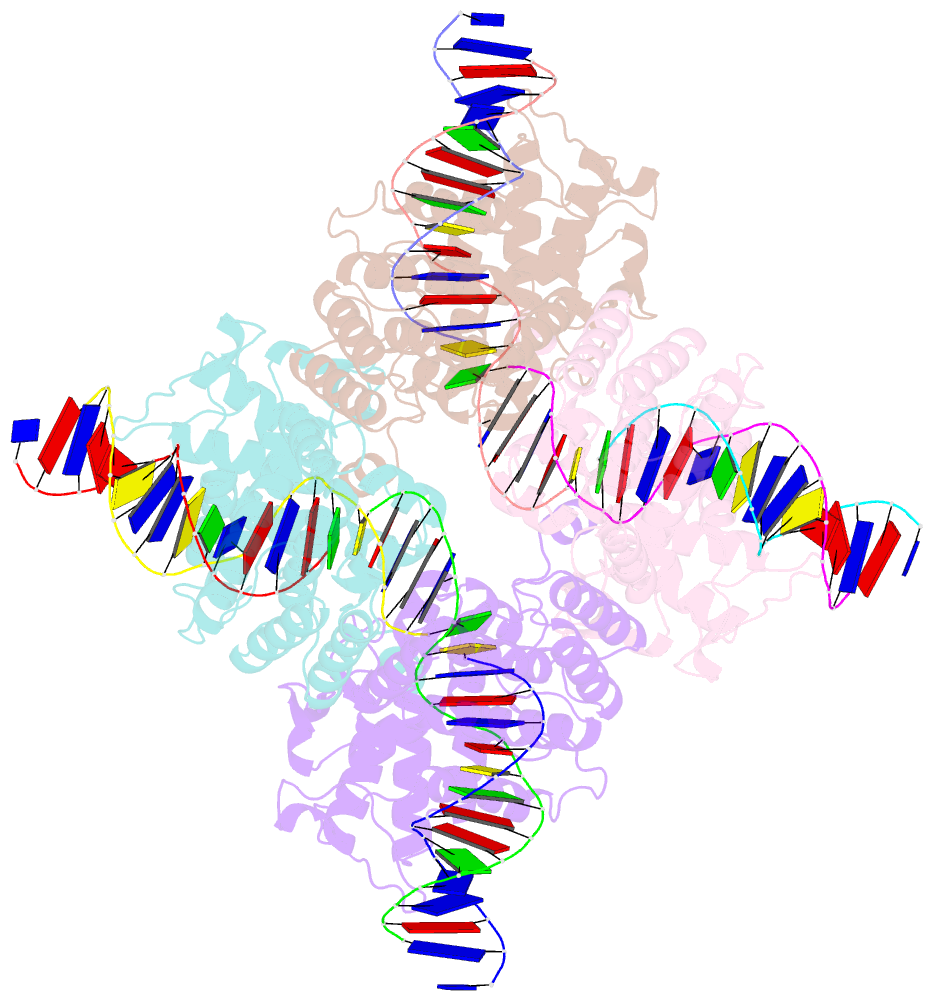Summary information and primary citation
- PDB-id
- 3mgv; SNAP-derived features in text and JSON formats;
DNAproDB
- Class
- isomerase-DNA
- Method
- X-ray (2.29 Å)
- Summary
- Cre recombinase-DNA transition state
- Reference
- Gibb B, Gupta K, Ghosh K, Sharp R, Chen J, Van Duyne GD (2010): "Requirements for catalysis in the Cre recombinase active site." Nucleic Acids Res., 38, 5817-5832. doi: 10.1093/nar/gkq384.
- Abstract
- Members of the tyrosine recombinase (YR) family of site-specific recombinases catalyze DNA rearrangements using phosphoryl transfer chemistry that is identical to that used by the type IB topoisomerases (TopIBs). To better understand the requirements for YR catalysis and the relationship between the YRs and the TopIBs, we have analyzed the in vivo and in vitro recombination activities of all substitutions of the seven active site residues in Cre recombinase. We have also determined the structure of a vanadate transition state mimic for the Cre-loxP reaction that facilitates interpretation of mutant activities and allows for a comparison with similar structures from the related topoisomerases. We find that active site residues shared by the TopIBs are most sensitive to substitution. Only two, the tyrosine nucleophile and a conserved lysine residue that activates the 5'-hydroxyl leaving group, are strictly required to achieve >5% of wild-type activity. The two conserved arginine residues each tolerate one substitution that results in modest recombination activity and the remaining three active site positions can be substituted with several alternative amino acids while retaining a significant amount of activity. The results are discussed in the context of YR and TopIB structural models and data from related YR systems.





